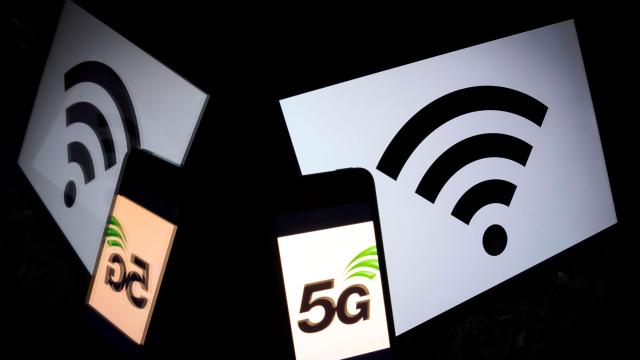Federal courts have opened the door for what may amount to the most substantial wifi upgrade in over twenty years. On Tuesday, as first reported by The Verge, a U.S. Court of Appeals for the District of Columbia Circuit issued a ruling where it supported the FCC’s decision to divvy up 1,200MHz of spectrum in the 6GHz band for unlicensed use, a move that paves the way for the eagerly anticipated move to wifi 6E. Prior to the ruling, wifi was limited to broadcasting over 2.4GHz and 5GHz bands.
That new spectrum represents the single largest addition since wifi was first introduced in 1989, the Verge notes. To put that in perspective, prior to the FCC’s additions, wifi operated with just 400MHz of the spectrum. With that in mind, this new ruling should essentially increase the space available to wifi by four times.
When implemented, all this additional spectrum could provide enough capacity to allow seven maximum capacity wifi streams to broadcast in the same areas without interfering with one another, The Verge notes. Put more simply, this should translate to increased bandwidth with less interference for everyday users. Proponents of the FCC’s decision, like agency Chair Jessica Rosenworcel, argue it will provide more wifi access in a greater number of places while simultaneously improving performance. All this extra space could also increase upload and download speeds as well.
Today the DC Circuit unanimously upheld the FCC’s decision to free up the 6 GHz band for more unlicensed use. This decision = more Wi-Fi in more places and it matters because it comes at a time when being connected is more important than ever.
— Jessica Rosenworcel (@JRosenworcelFCC) December 28, 2021
In a nutshell, 6GHz wifi works by both adding in new airwaves that can be used while also keeping separate wifi channels from crossing over one another. This means 6GHz wifi devices shouldn’t have to compete with other devices for spectrum. Devices supporting Wifi 6 actually began rolling out as early as 2019, but until now were unable to access the 6 GHz band. Through the 6GHz band is most commonly mentioned in reference to wifi applications, the FCC’s decision to open up additional spectrum for unlicensed use means those same airwaves could theoretically be used for 5G as well.
The FCC actually voted unanimously to open up the 6 GHz band for unlicensed devices back in early 2020, but was challenged in court by AT&T which argued the decision didn’t take into account potential interference with thousands of microwave links.
“By failing to require that new wifi devices using this band include smart technology that avoids interference, the FCC’s order will allow the introduction of devices that can impair, or even knock out, links in the networks that monitor our electric grid, enable first responders to communicate and provide mobile broadband services to millions of Americans, particularly in rural areas,” AT&T Executive Vice President of Regulatory & State External Affairs Joan Marsh said a the time.
Hardware manufacturers and router producers on the other hand have welcomed this moment with open arms. Prior to the ruling, Qualcomm, Intel, Facebook, and Cisco had all voiced support for the new spectrum, with Apple previously claiming it “sets the course for the next generation of wifi networks.”
Looking forward, work has already begun on a new, wifi-standard known as IEEE 802.11 which further optimises the use of new bands, but isn’t expected until around 2024. At the same time, carriers are racing to bolster their 5G cellular network which they expect will turn some proportion of users away from wifi altogether for regular internet use. T-Mobile said there’s evidence that transition is already happening. In a recent blog post, the carrier released data showing a significant increase in hotspot usage among users of its Magenta Max premium 5G data plan. According to T-Mobile, 13% fewer of those users were connecting to wifi, while hotspot usage, in general, was up 20% during weekends.
Editor’s Note: Release dates within this article are based in the U.S., but will be updated with local Australian dates as soon as we know more.
